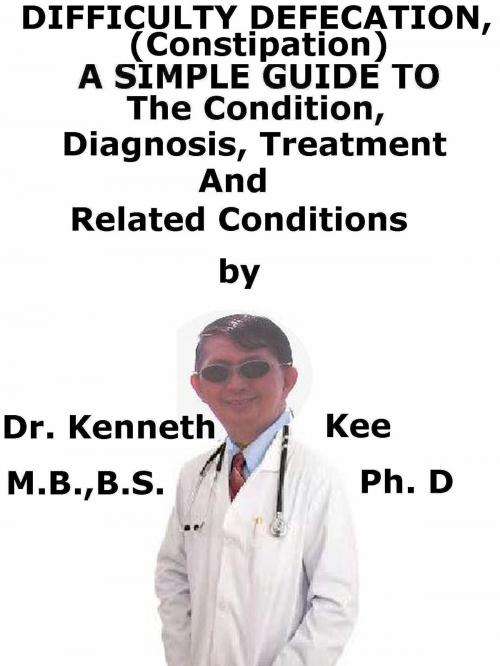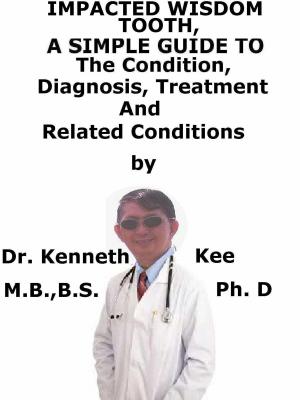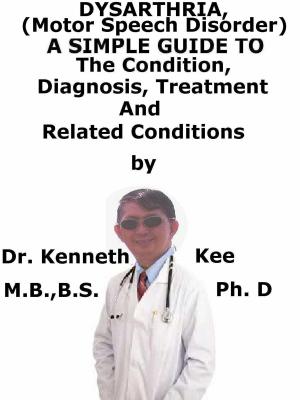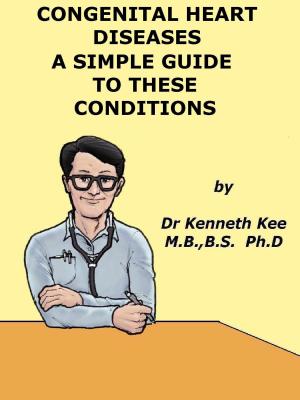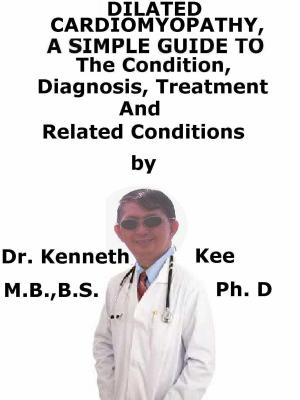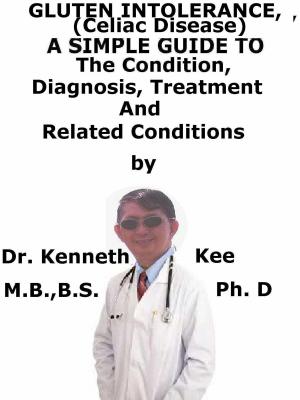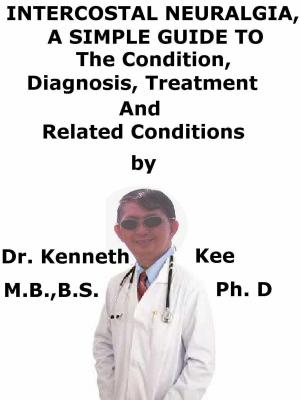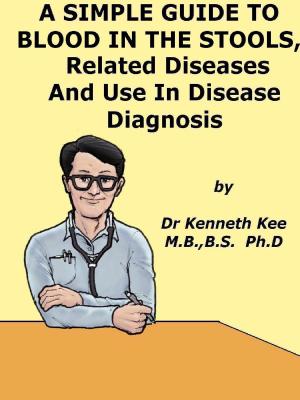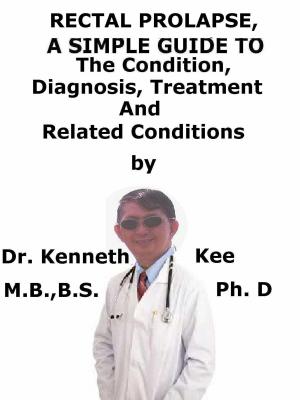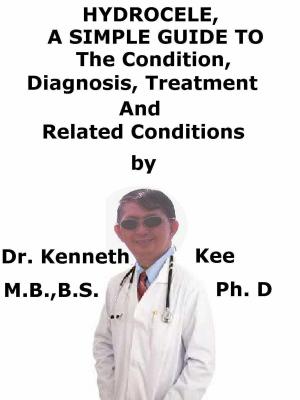Difficult Defecation (Constipation), A Simple Guide To The Condition, Diagnosis, Treatment And Related Conditions
Nonfiction, Health & Well Being, Medical, Specialties, Internal Medicine, Gastroenterology, Health, Ailments & Diseases, Abdominal| Author: | Kenneth Kee | ISBN: | 9780463489192 |
| Publisher: | Kenneth Kee | Publication: | July 9, 2018 |
| Imprint: | Smashwords Edition | Language: | English |
| Author: | Kenneth Kee |
| ISBN: | 9780463489192 |
| Publisher: | Kenneth Kee |
| Publication: | July 9, 2018 |
| Imprint: | Smashwords Edition |
| Language: | English |
This book describes Difficult Defecation, Diagnosis and Treatment and Related Diseases
3 weeks ago, an old lady of 80 years old came to consult me about her constipation which had caused her symptoms of lower abdominal pain and bloating for 2 weeks in spite of being treated by several doctors with laxatives and enema.
As she was supposed to go for a trip to Australia in 1 week’s time she hoped that I would be able to resolve her problem as soon as possible.
I could feel many lumps of stools in the left lower part of her abdomen which suggested impaction of her stools.
I informed her that the fastest way was to evacuate her stools manually or she could go the hospital for a soapy evacuation of her impacted stools.
As she did not want to go hospital, I decided to evacuate her stools manually.
I used a gloved hand to dig out the hard stools which was stuck in her anal region and managed to fill 2 large bags of hard stools.
It was a difficult work but after the evacuation she felt so much better.
As usual the stink of her stools filled the air in the clinic and the doors were opened to allow the smell to dissipate to the outside.
This was the second time I had to evacuate the stools impacted in the anal region of a patient, the last being 20 years ago on a male elderly patient.
I gave my patient some senokot tablets and liquid paraffin to help her defecation and advised her to drink more water, fruits and fiber and do mild exercise to help her defecation.
The next day she rang me to thank me and to inform me that her defecation was back to normal.
Difficult defecation is a common problem in the elderly
Constipation by definition is a disorder which is featured by fewer than normal bowel movements than normal or stools that are harder to pass.
It is followed by straining, incomplete excretion and passage of hard stools.
The causes are of two forms:
- Obstruction of defecation
- Colonic slow movement (or hypo-motility)
50% of patients evaluated for constipation at referral hospitals have blockage of defecation.
This form of constipation has mechanical and functional causes.
Causes of colonic slow movement constipation are:
1.Diet,
2.Hormonal disorders such as hypothyroidism,
3.Side effects of medicines
Constipation can be caused or aggravated by a low fiber diet, low liquid intake, or dieting.
Constipation is bowel movements that are:
1.Difficult to pass,
2.Very firm, or
3.Made up of small hard pellets (like those excreted by rabbits) even if they occur every day.
Other symptoms are:
1.Bloating,
2.Distension,
3.Abdominal pain,
Physically palpable lumps of stool may be found on palpation of the abdomen.
Rectal examination gives a feeling of the anal sphincter tone and whether the lower rectum has any feces or not.
X-rays of the abdomen is normally only done if bowel obstruction is indicated
Treatment
Since constipation is a symptom, not a disease, successful treatment of constipation may need first finding the cause.
The main treatment of constipation affects the higher intake of water and fiber (either dietary or as supplements).
The regular use of laxatives is not advised, as having bowel motions may become dependent upon their use.
Enemas can be given to provide a form of mechanical stimulation.
Broadly, categories of treatments are:
1.Bulk-forming products,
2.Stool softeners,
3.Osmotic agents and
4.Stimulant laxatives
Newer treatment for constipation is:
1.Prucalopride -prokinetic
2.Osmotic agent lubiprostone
3.Linaclotide and plecanatide -GC-C agonists
Surgical care may be used:
Rectal outlet obstruction
Hypomotile colon
Recently the new treatment of sacral nerve stimulation (SNS) has been utilized for the treatment of severe constipation.
TABLE OF CONTENT
Introduction
Chapter 1 Difficult Defecation
Chapter 2 Causes
Chapter 3 Symptoms
Chapter 4 Diagnosis
Chapter 5 Treatment
Chapter 6 Prognosis
Chapter 7 Anal Fistula
Chapter 8 Hemorrhoids
Epilogue
This book describes Difficult Defecation, Diagnosis and Treatment and Related Diseases
3 weeks ago, an old lady of 80 years old came to consult me about her constipation which had caused her symptoms of lower abdominal pain and bloating for 2 weeks in spite of being treated by several doctors with laxatives and enema.
As she was supposed to go for a trip to Australia in 1 week’s time she hoped that I would be able to resolve her problem as soon as possible.
I could feel many lumps of stools in the left lower part of her abdomen which suggested impaction of her stools.
I informed her that the fastest way was to evacuate her stools manually or she could go the hospital for a soapy evacuation of her impacted stools.
As she did not want to go hospital, I decided to evacuate her stools manually.
I used a gloved hand to dig out the hard stools which was stuck in her anal region and managed to fill 2 large bags of hard stools.
It was a difficult work but after the evacuation she felt so much better.
As usual the stink of her stools filled the air in the clinic and the doors were opened to allow the smell to dissipate to the outside.
This was the second time I had to evacuate the stools impacted in the anal region of a patient, the last being 20 years ago on a male elderly patient.
I gave my patient some senokot tablets and liquid paraffin to help her defecation and advised her to drink more water, fruits and fiber and do mild exercise to help her defecation.
The next day she rang me to thank me and to inform me that her defecation was back to normal.
Difficult defecation is a common problem in the elderly
Constipation by definition is a disorder which is featured by fewer than normal bowel movements than normal or stools that are harder to pass.
It is followed by straining, incomplete excretion and passage of hard stools.
The causes are of two forms:
- Obstruction of defecation
- Colonic slow movement (or hypo-motility)
50% of patients evaluated for constipation at referral hospitals have blockage of defecation.
This form of constipation has mechanical and functional causes.
Causes of colonic slow movement constipation are:
1.Diet,
2.Hormonal disorders such as hypothyroidism,
3.Side effects of medicines
Constipation can be caused or aggravated by a low fiber diet, low liquid intake, or dieting.
Constipation is bowel movements that are:
1.Difficult to pass,
2.Very firm, or
3.Made up of small hard pellets (like those excreted by rabbits) even if they occur every day.
Other symptoms are:
1.Bloating,
2.Distension,
3.Abdominal pain,
Physically palpable lumps of stool may be found on palpation of the abdomen.
Rectal examination gives a feeling of the anal sphincter tone and whether the lower rectum has any feces or not.
X-rays of the abdomen is normally only done if bowel obstruction is indicated
Treatment
Since constipation is a symptom, not a disease, successful treatment of constipation may need first finding the cause.
The main treatment of constipation affects the higher intake of water and fiber (either dietary or as supplements).
The regular use of laxatives is not advised, as having bowel motions may become dependent upon their use.
Enemas can be given to provide a form of mechanical stimulation.
Broadly, categories of treatments are:
1.Bulk-forming products,
2.Stool softeners,
3.Osmotic agents and
4.Stimulant laxatives
Newer treatment for constipation is:
1.Prucalopride -prokinetic
2.Osmotic agent lubiprostone
3.Linaclotide and plecanatide -GC-C agonists
Surgical care may be used:
Rectal outlet obstruction
Hypomotile colon
Recently the new treatment of sacral nerve stimulation (SNS) has been utilized for the treatment of severe constipation.
TABLE OF CONTENT
Introduction
Chapter 1 Difficult Defecation
Chapter 2 Causes
Chapter 3 Symptoms
Chapter 4 Diagnosis
Chapter 5 Treatment
Chapter 6 Prognosis
Chapter 7 Anal Fistula
Chapter 8 Hemorrhoids
Epilogue
